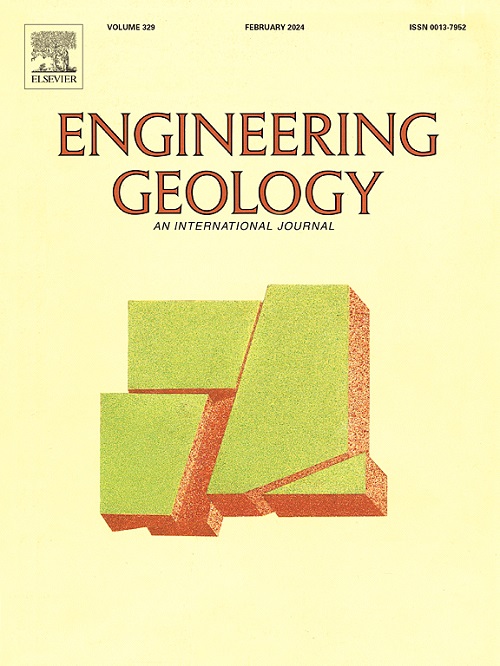基于物理定律约束的全衰减极化反演方法评价隧道突水危险性
IF 8.4
1区 工程技术
Q1 ENGINEERING, GEOLOGICAL
引用次数: 0
摘要
在隧道施工中遇到的复杂地质条件下,水害是一个巨大的风险。因此,有必要对隧道水害进行更精确的评估和检测。提出了一种具有物理定律约束的全衰减极化反演方法,用于突水灾害评价。该方法在传统等效电阻率FDIP反演方法的基础上,创新性地增加了物理定律约束。物理律约束包括时间平滑、威布尔生长模型和空间平滑三个约束。首先,研究提出了计算等效电阻率的两种约束,即时间平滑约束和威布尔生长模型约束,以确保电阻率随时间的平滑单调变化。此外,该研究在推导FDIP多参数时引入了空间平滑约束,保证了地下属性的渐变,避免了突变。数值模拟和西南某引水隧洞实例验证了物理约束下FDIP反演方法的有效性。本文章由计算机程序翻译,如有差异,请以英文原文为准。
Assessment of water inrush hazards in tunnels using the inversion method of full-decay induced polarization with physical law constraints
Water hazards pose significant risks in complex geological conditions encountered during tunnel construction. Therefore, it is necessary to assess and detect water hazards in tunnels with greater precision. This paper proposes an inversion method of full-decay induced polarization (FDIP) with physical law constraints for assessing water inrush hazards. This method innovatively adds physical law constraints to the conventional FDIP inversion method based on equivalent resistivity. The physical law constraints comprise time-smoothing, the Weibull growth model, and spatial smoothing three constraints. Initially, the study presents two constraints for calculating equivalent resistivity, time-smoothing, and Weibull growth model constraints, to ensure smooth and monotonical resistivity changes over time. Additionally, the study incorporates a spatial smoothing constraint when deriving FDIP multi-parameters which guarantees gradual transitions of subsurface properties to avoid abrupt changes. The efficacy of the inversion method of FDIP with physical law constraints was confirmed by numerical simulations and a water diverting tunnel in Southwest China.
求助全文
通过发布文献求助,成功后即可免费获取论文全文。
去求助
来源期刊

Engineering Geology
地学-地球科学综合
CiteScore
13.70
自引率
12.20%
发文量
327
审稿时长
5.6 months
期刊介绍:
Engineering Geology, an international interdisciplinary journal, serves as a bridge between earth sciences and engineering, focusing on geological and geotechnical engineering. It welcomes studies with relevance to engineering, environmental concerns, and safety, catering to engineering geologists with backgrounds in geology or civil/mining engineering. Topics include applied geomorphology, structural geology, geophysics, geochemistry, environmental geology, hydrogeology, land use planning, natural hazards, remote sensing, soil and rock mechanics, and applied geotechnical engineering. The journal provides a platform for research at the intersection of geology and engineering disciplines.
 求助内容:
求助内容: 应助结果提醒方式:
应助结果提醒方式:


